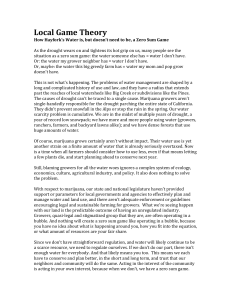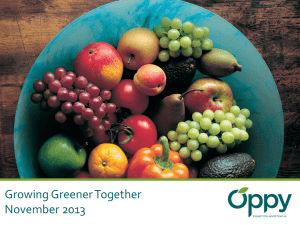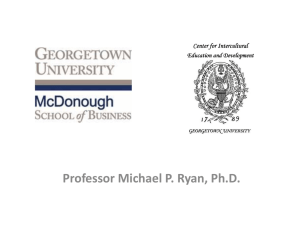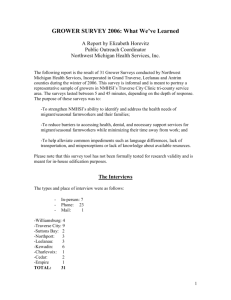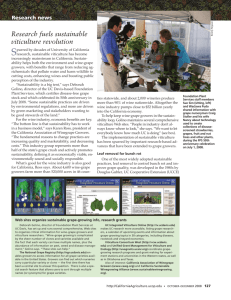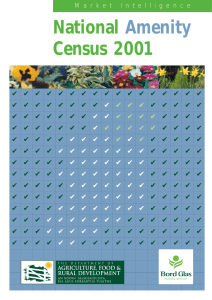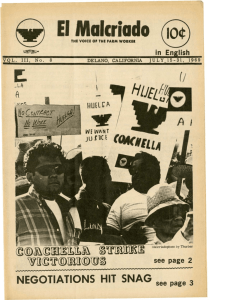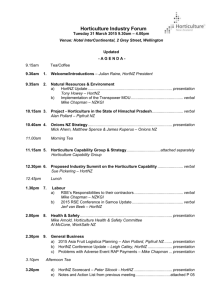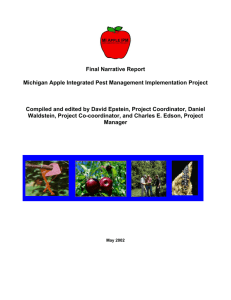Notes from the Field: Northeast Washington The majority of farms in
advertisement
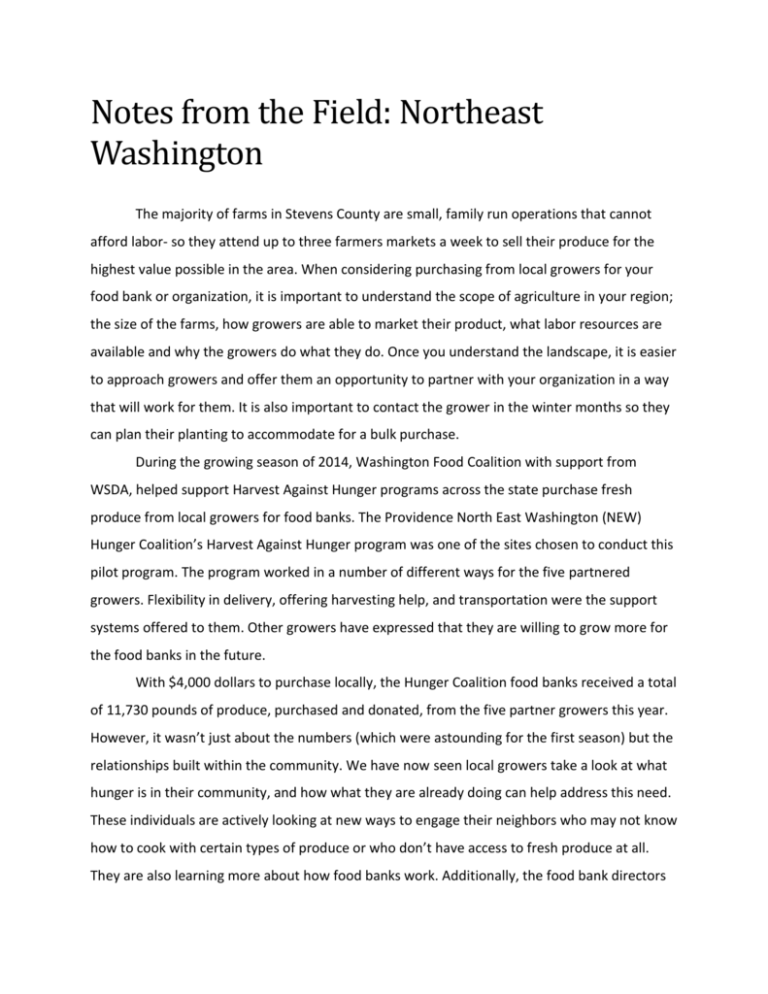
Notes from the Field: Northeast Washington The majority of farms in Stevens County are small, family run operations that cannot afford labor- so they attend up to three farmers markets a week to sell their produce for the highest value possible in the area. When considering purchasing from local growers for your food bank or organization, it is important to understand the scope of agriculture in your region; the size of the farms, how growers are able to market their product, what labor resources are available and why the growers do what they do. Once you understand the landscape, it is easier to approach growers and offer them an opportunity to partner with your organization in a way that will work for them. It is also important to contact the grower in the winter months so they can plan their planting to accommodate for a bulk purchase. During the growing season of 2014, Washington Food Coalition with support from WSDA, helped support Harvest Against Hunger programs across the state purchase fresh produce from local growers for food banks. The Providence North East Washington (NEW) Hunger Coalition’s Harvest Against Hunger program was one of the sites chosen to conduct this pilot program. The program worked in a number of different ways for the five partnered growers. Flexibility in delivery, offering harvesting help, and transportation were the support systems offered to them. Other growers have expressed that they are willing to grow more for the food banks in the future. With $4,000 dollars to purchase locally, the Hunger Coalition food banks received a total of 11,730 pounds of produce, purchased and donated, from the five partner growers this year. However, it wasn’t just about the numbers (which were astounding for the first season) but the relationships built within the community. We have now seen local growers take a look at what hunger is in their community, and how what they are already doing can help address this need. These individuals are actively looking at new ways to engage their neighbors who may not know how to cook with certain types of produce or who don’t have access to fresh produce at all. They are also learning more about how food banks work. Additionally, the food bank directors and volunteers are learning about our growers, what they have to work with, their challenges in the community and the reasons why they believe strongly about growing healthy food. Another reason the purchasing program in Stevens County is considered successful was due to the large amounts of produce donated after the purchased amount was received. The support offered by the Hunger Coalition helped increase donations from local growers because it made donating easy. We worked on their schedule instead of the food bank hours. Most growers would rather donate their excess or non-marketable produce than see it go to waste, and they are eligible for tax deductions for donating. Two growers- Front Porch Farm and Colville Corn Maze- actually donated more over the season than what was purchased. Helping your organization support local growers could deeply benefit the amount AND quality of produce being offered in your food banks. In Colville, just providing a familiar face and a reliable person who was willing to be at their beck and call was valued among the growers this season. The challenges which arose this season generally derived from inadequate volunteer capacity and transportation. In order to ‘get more bang for the buck’ the Harvest Against Hunger program committed to harvesting a portion of what was purchased from select growers. This not only enabled the food banks to see more produce, but it also helped smaller growers afford more valuable time on their farm. However, with the program being new, skilled volunteers were difficult to find. Since the majority of the growers in Stevens County are small operations, the program saw a continuous flow of deliveries and donations throughout the summer. The Hunger Coalition and affiliate organizations are already seeking opportunities to build upon the great foundation which was established this year to enhance these effects on our community. In efforts to improve upon the lessons learned during the first season, the Harvest Against Hunger program will also strive to secure more assistance in transportation from local food banks, and to further engage food bank clients to join the harvesting process.
